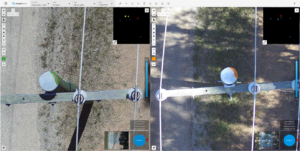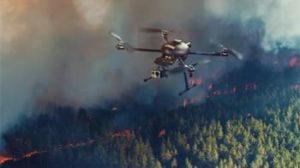Historically, the word ‘drone” is associated as being an autonomously piloted military aircraft capable of carrying a lethal weapon, however the correct terminology and the multiple terms that are used for unmanned aerial vehicles appear to be evolving, however they all generally refer to the same concept.
In 2002 Casa (Civil Aviation Safety Authority) started off referring to drones as UAV’s (Unmanned Aerial Vehicles). Much of CASA’s documentation still refers to drones as being UAV’s. A UAV is predominantly defined as a “powered, aerial vehicle that does not carry a human operator, uses aerodynamic forces to provide vehicle lift, can fly autonomously or be piloted remotely. Important also is that the aircraft can be recoverable.
The term RPAS (Remotely Piloted Aircraft System) is another common phrase for a drone that dates back pre-World War 1. In 1849, camera-equipped kites and balloons were used for both aerial photography and military reconnaissance.
In Australia CASA have recently announced amendments to Part 101 which came into effect on 29 September 2016.
These changes include updates to certain terminology relevant to the flight operations of unmanned aircraft in order to better align with the International Civil Aviation Organization. In particular, the term UAV (unmanned aerial vehicle) now becomes RPA (remotely piloted aircraft).
While some manufacturers, public organizations, and operators are all referring to some specific terms with slight differences from one to another, the terms Unmanned Aircraft (UA) or Remotely Piloted Aircraft (RPA) are used to describe the aircraft itself, while the terms Unmanned Aircraft System (UAS) and Remotely Piloted Aircraft System are generally used to describe the entire operating equipment including the aircraft, the control station from where the aircraft is operated and the wireless data link.
Regardless of the terminology that you use, whether it’s RPA, drone, UAV, RPAS or UAS, the recent changes bought in on the 29th of September 2016 were designed at reducing ‘red tape’ associated with certification, thereby making it simpler for operators using equipment categorized as low risk to get up and running in the industry. The changes also introduced categories of RPA known as included and excluded categories. Which category your Drone/RPAS falls into is determined by the weight and the risk, and this further determines what your licensing requirements will be.
The terminology around the licensing structure has also changed with the part 101 changes on the 29th of September. What was formally known as a UAV Controller Certificate, is now known as a Remote Pilot Licence (RePL). The second level of certification formally known as a UAV Operator Certificate, is now called a RPA Operator Certificate (ReOC).
CASA also introduced new weight categories with the changes to part 101. This is determined by the gross weight of the aircraft and the categories are listed below.
- very small (100g – <2kg)
- small (2 – <25kg) (where required with 7kg restriction)
- medium (25 – <150kg)
- large (>150kg).
One of the major changes with the new legislation allows operators in the very small category (Less than 2kg) to operate commercially without needing a Remote Pilot License (RePL) or RPA Operator Certificate (ReOC). This is known as an excluded category operation. When operating as an excluded category operation there are conditions known as Standard Operating Conditions (SOC) which need to be strictly adhered to. The standard operating conditions (SOC) are –
- You must keep your drone in visual line of sight – this means not flying beyond a distance where you can see and orient the aircraft.
- You can only fly during daylight hours
- You cannot fly closer than 30 metres to people not associated with the operation of the RPA
- You must remain at a distance greater than 3 nautical miles, or 5.5 km away from aerodromes which have an air traffic control service that is active
- You cannot fly over populous areas which are areas deemed to have a sufficient density of population that if something on the aircraft were to fail it could cause injury or damage to people or property in the area.
- You cannot fly over an area affecting public safety or if there is an emergency operation in progress unless you have approval from the person in charge.
- You can only fly one RPA at any time.
Provided you meet all of the conditions above you can operate as an excluded category operator.
You will need to notify CASA five days before your first commercial operation and also obtain an Aviation Reference Number. More information about this can be found here.
Keep in mind that 2kg is payload limiting and will only allow drones such as DJI Phantoms, and similar sizes to be operated commercially. As soon as you want to step up to bigger, more capable machines you would require licensing in the form of a remote pilot license (RePL) and possibly an RPA Operator Certificate (ReOC)
Fly UAS are an Australia wide training organization certifying students in professional drone related accreditations. Closely associated with Bob Tait’s Aviation Theory School and National Drones, Fly UAS is known for having the best course content, the best instructors and the best facilities Australia wide. Fly UAS can be contacted on 1300 FLY UAS.

